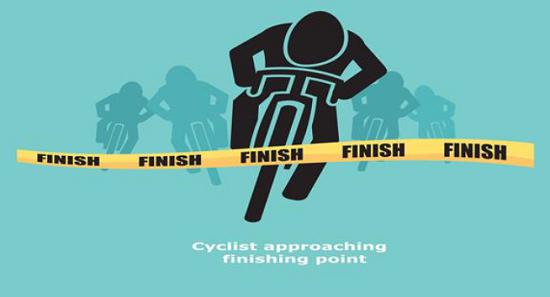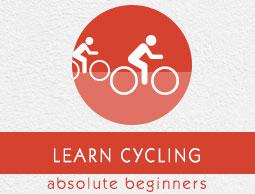How To Compete In Bicycle Races
The Cycling competitions start off when all the cyclists assemble at the starting point. These championships are held in different formats as a league or series where a team or individual cyclists can participate.
Getting Ready
The road race begins when all the riders and their sport directors assemble at the starting point to sign the starting sheet. The cyclists take their respective positions at the start line 15 minutes before starting the race, the cautions are given before start and on “flying the flag” the race begins.
The event organizers place permanent panels with the distance markings indicating the kilometer or lap marking. Ideally the markings start from “Kilometer Zero” at the real start point and the panel gets updated of first five distance markings. Later when the race is half done the distances from the finishing line to be achieved is marked on the panel for easy understanding.
Quick Glimpse of the Race
The road bicycle race often referred to as the pedal race as the rider cannot loose contact of his hands from the handle bar and should keep on pedalling. The cycling sport does not follow any typical racing game formats such as quarters, rounds or periods but just continues with the race until the finish.

There are no stringent rules applied to the cyclists in this sport but just cycling with an aerodynamic mechanism. The riders usually are relaxed and cycle at a slow pace when the race starts but only in the last one third of the race the competitive leg work starts and the cyclists make strategic moves and win over the opponents. The winner is declared when that particular cyclist crosses the finish line before the other opponents taking less time to cover the total race distance.
Rules of Cycling
The bicycle race is conducted on open roads, closed road circuits and tracks. The rules of the sport are mostly similar in all types of cycle races. The cycling rules defined and regulated by the UCI for the riders are listed below −
Bike gearing rules − The riders before beginning the race should have a bike gear check and the chief commissionaire checks the rider’s bicycle meets the standards mentioned by the UCI.
Race course rules − The rider should know the exact route of the race course if it is an open road cycling competition and at any point of time during the race until the finish the cyclist cannot deviate from the race route. In case of any deviation of the race route the rider is withdrawn out of the race. Usually the race is held on challenging road courses with turns and curves till the last 200 meters. The last 200 meters from the finish line should be hassle free without any turns and curves to enable the rider to progress faster towards the finish line.
Positioning of the Rider − In cycling the most important rule of the road racing is that the rider can never loose contact of his hands from the handle bar of the cycle. The tuck positioning, the rider’s forearms while holding the handle bar must be parallel to the ground in the entire race. The rider who tends to remove his hands from the handle bar during the race is penalized by the chief judge. To keep up the aerodynamic movement of the cycle the rider needs to maintain a high saddle position, forearms parallel to the ground and a forward back bend with a head facing the road at a steep angular position termed as tuck position.
Speed of the Rider − Experienced cyclists develop good bike handling skills to ride the bicycle in high speed even though the other riders are close by in a peloton or echelon. An individual racer can ride their bike at 110km/h during the road race and while crosswinds and descending position will maintain a speed ranging from 60 to 80 km/h.
Free Lap Rule − For the closed circuit bicycle races and track cycling the distance of the race is covered in number of laps. The competitors should cover the race distance even though there are mishaps or accidents in the race. If rider has minor injuries then he is still qualified to make up the race on his ability. In that instance the chief judge announces a grant of one or two free laps for the rider. In some cycling races the organizers declare ahead of the race of “No Free Lap” and despite of mishaps or accidents no free laps is given to any rider to finish the race.
Drafting − The racing tactic where a rider reduces the pedal effort just by following the other rider in the front. Usually a peloton or the main group of cyclists is being followed by the other riders to save their effort and energy in forward cycling motion. Drafting however is not permitted in Time trail but allowed in other racing formats.
Breaks − This is another racing technique where a relatively small group of riders breaks away with the peloton to have a winning advantage. Out of the break group by attacking and blocking the sprinter usually finishes the race first.
Finish line − The finish line perpendicular to the race course is marked at the end of the set distance on the road with black color which is ideally 4 to 6 cm of width to make the line visible to the rider.
Finish of the Race − A rider is said to finish his cycling race when the front tip of the rider’s bike crosses the finish line. The cycle judges keep note of the cyclists ranking according to the order of the finish.
Types of Riders
The cycle racers are held in different formats and the riders have unique strengths and weaknesses in cycling across in a race. Depending upon their cycling skills the racers tend to choose a race format suitable for their skill set. The riders are classified as follows −
Sprinter − A type of racer who can finish the race by accelerating to out-and-out high speed while reaching the finish line.
Climbing Specialist − A climber can maintain good speed even while riding on an inclined plane and create an aerodynamic advantage to race on the inclined road.
Time Trialist − This type of racer can ride in great high speed for a longer period and can improve his performance in the race. Usually Time trialists are specially trained to compete against the time.
All-rounder − The racer who excels as a climber, sprinter and time trialist is said to be an all-rounder. These racers are chosen as a team leader for a team in stage races.



